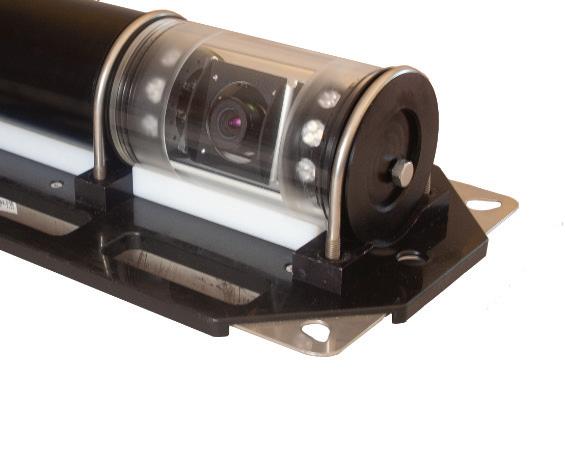
4 minute read
Dock Talk
An array of risks
By Shelley Wigglesworth
n June 2019, Maine’s Gov. Janet
IMills signed a bill requiring the state Public Utilities Commission to approve the contract for an o shore wind farm in Maine. This proposed array would cover 16 square miles of prime shing ground in the Gulf of Maine, with miles of underground cables installed 2 meters below the ocean bottom to transport the energy. The array would operate for 20 years before being decommissioned.
Though touted as a research array to explore clean energy alternatives, this project is an experiment. And during this experiment, power generated will be sold for pro t, likely to out of state consumers. Information from this research will not just bene t scientists, but also big-money energy investors who want to develop wind farms throughout the Gulf of Maine.
“When you a look at a chart of where all the preferred wind farm leases are on the East Coast and compare that to the chart NMFS has made showing the most heavily shed areas, almost every lease is based directly on or adjacent to the best grounds,” said sherman Glen Libby.
There is a lot more at stake here than may meet the eye. Drilling the ocean meters down, placing cables and topping with an arti cial cover for miles will at the very least disrupt and at the very worst
Nieuwkerk family
Eben Nieuwkerk, Knoep Nieuwkerk, Hannah Nieuwkerk Smith and her daughter Julia are three generations of Maine fi shermen.
destroy countless marine life habitats, ecosystems and breeding grounds, which will in uence the food chain from there on up, not to mention the unknown long-term e ects chemicals coating the underground cables may have on the environment and consumers.
Electromagnetic elds and noise from o shore wind turbines can

EXPLORE THE WATER




STAY OUT LONGER WITH DOMETIC SANITATION
Maintain a fresh and pleasant environment on board your boat with Dometic’s range of hygiene and sanitation solutions. Supported by decades of research, we have developed an assortment of sanitation products to promote comfort, while catering to an essential need.

Third-generation lobsterman Michael Myers also fi shes bluefi n, halibut and pogies on the Alaina & Olivia out of Tenants Harbor. Arnold “Buzzy” Kinney and fourth-generation lobsterman Erik Waterman harvest scallops on the F/V Sea Star of Spruce Head.

Erik Waterman



interrupt the natural cycles of robust native species as well as endangered and protected marine species — including right whales, for which lobstermen have changed shing practices and gear to avoid doing any potential harm.
“If this goes through, it’ll forever change shing families’ lives in a negative way,” said Eben Nieuwkerk, a sherman who has started an online petition to stop the wind array, which be found at tinyurl.com/gulfofmaine.
European wind arrays have resulted in some surrounding areas deemed no- shing areas because of the proximity to the turbines, resulting in shermen losing access to sh and areas they have depended on for generations to harvest sh. This is a risk many Maine shermen do not want to gamble on.
“Every bit of where they have marked (for potential o shore wind farms) is prime tuna and lobster bottom,” said sherman Michael Myers.
Then there is the nancial concern. Rhode Island’s Block Island wind array energy started at 24.4 cents per kwh, more than double the price paid for power from conventional sources. Add to this annual increases of 3.5 percent for life of the contract. Energy consumers have taken the wind power company to court about this.
With right whale regulation struggles, seafood trade tari s, a global pandemic, and government and state restrictions and regulations prohibiting the numbers of days shermen can sh and limiting what they can catch, now is not the time to experiment with a wind array. The Gulf of Maine should not be used as a guinea pig.
“My biggest concern is that sherman from all types of sheries will lose bottom and never get it back,” said sherman Erik Waterman. “This is our livelihood; our pie keeps getting sliced. I’m afraid that if we allow one wind turbine power cable ashore it is going to snowball up and down the coast.”

Shelley Fleming Wigglesworth is a freelance journalist based in Kennebunkport, Maine.
Seeyourcatch/ Beforeithitsthedeck




We take the heat, so you don’t have to.
Cool. Because you need it. We deliver cool based on your reality. So no matter where you operate, hot days and heavy loads will never slow you down.
GRIDCOOLER® Keel Cooler
WEKA Boxcooler® Tranter® Heat Exchangers
fernstrum.com | 1.906.863.5553 | sales@fernstrum.com ISO 9001:2015
© 2021 R.W. Fernstrum & Company. All rights reserved. FERNSTRUM® and GRIDCOOLER® are registered trademarks of R.W. Fernstrum & Company. All other trademarks cited are the property of their respective owners.







